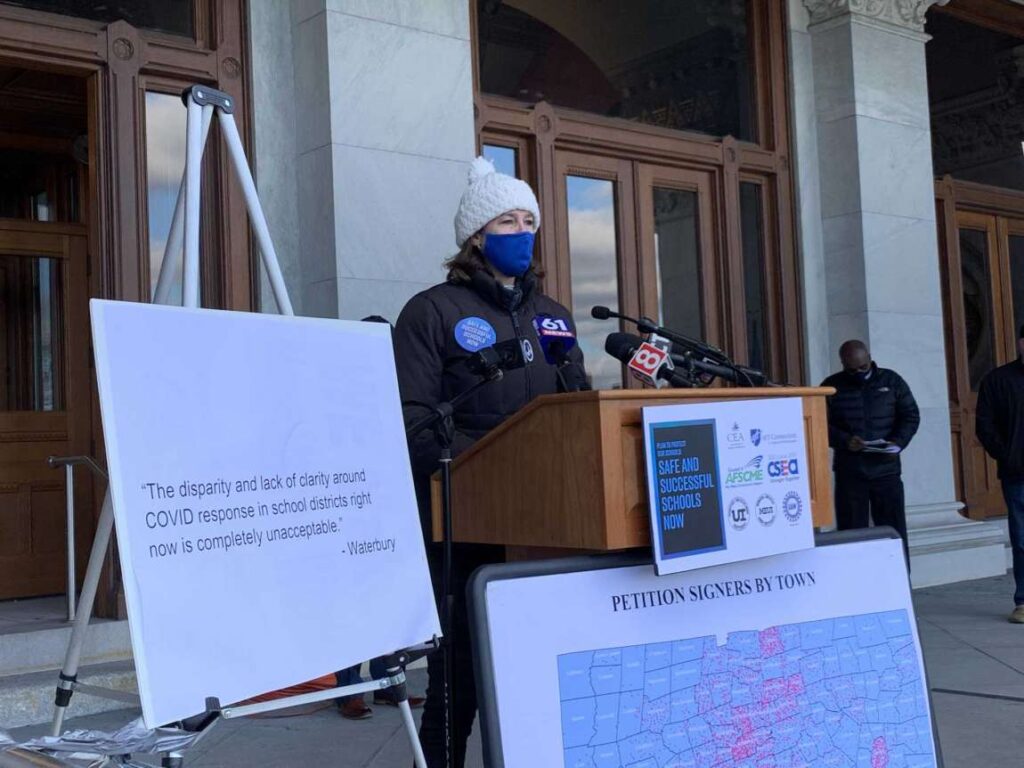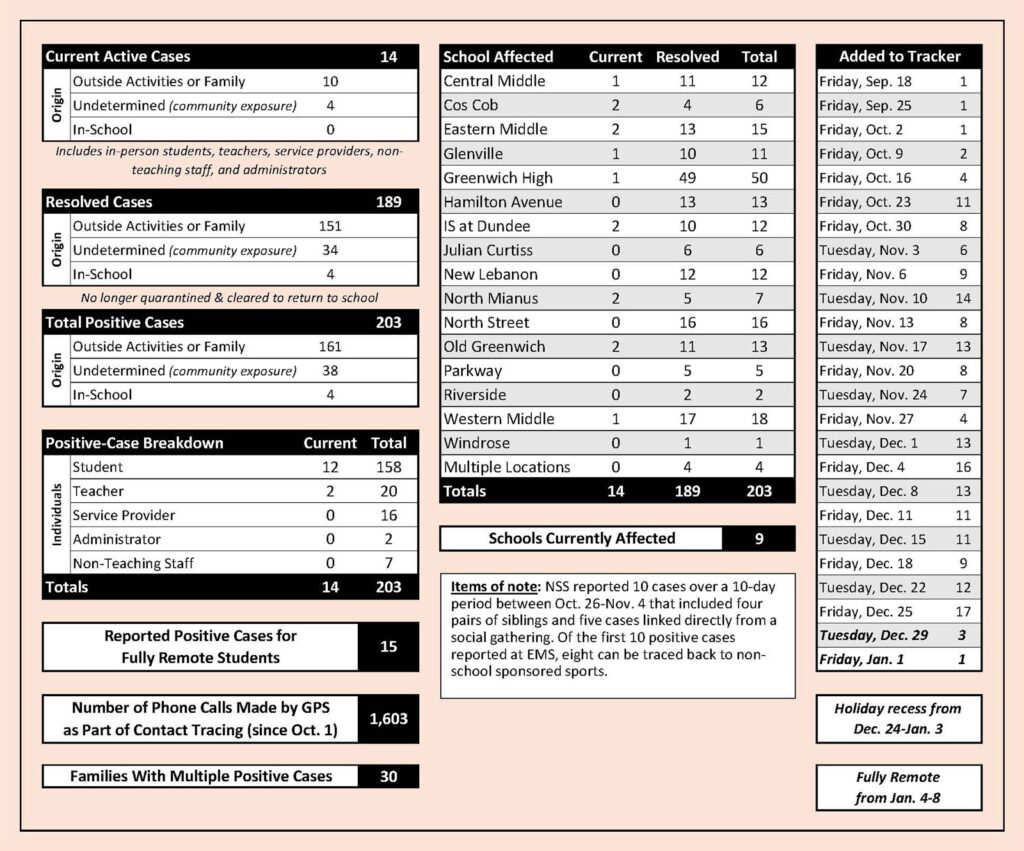
Earlier this month, just days before the first Connecticut health care workers were administered the newly-approved coronavirus vaccine, a coalition of public school employee unions sent Governor Lamont a petition demanding that he close schools unless and until schools implement a set of COVID-19 safety protocols designed by Connecticut Education Association (CEA).
The CEA-led union coalition demanded that the protocols be enforced by the state, not local authorities. They demanded that Lamont mandate full-pay and a no-layoff policy for all public school employees through the end of the school year.
What a striking juxtaposition between the selfless dedication of health care workers who have been treating patients hospitalized with serious – and highly contagious – cases of COVID-19 for nine straight months and the selfish outlook of the 14,000 petition signers, who, only over the last three months, started again to interact with school-age kids, who present the lowest risk of transmission of all segments of the population.
To demand the closing of schools is tantamount to desertion on the field of battle. The top generals in this war — Dr. Anthony Fauci, Director of the National Institute for Allergy and Infectious Diseases, Robert Redfield, Director of the Centers for Disease Control, and Surgeon General Jerome Adams — have all said schools should be open. Fauci said this earlier this month even as the current surge of the virus was well under way.
To his credit, Governor Lamont has listened to these federal experts and seems to have ignored the union petition. Lamont’s general policy with respect to schools and the coronavirus is also creditable, namely that decisions should be made at the local level by officials who are most knowledgeable about local conditions and locally appropriate precautions and safety measures, not by state officials far removed in Hartford.
Nine months of the pandemic experience show children to be at minimal risk themselves. Of Connecticut’s roughly 6,000 COVID-related fatalities, only one was of school-age, a teenager with Lupus.
Of the 225,000 national COVID-19 deaths for which the Centers for Disease Control has demographic data, there have been only 130 school-age deaths, or one death for every one-hundred schools of the nation’s 131,000 K-12 schools. During the 2019-2020 school year, more kids died of the seasonal flu (195), according to the CDC. Of the 95,000 total COVID-19 hospitalizations – i.e. serious cases – for which the CDC has data, only 900 have been school-age children.
School children themselves have virtually no risk from COVID-19.
But do schoolchildren spread the virus? That is a fair question for adult school employees.
As a starting premise, it is only logical to assume that contagiousness varies with the seriousness of cases of an infectious disease. On this basis, it is only logical to assume that schoolchildren, who rarely suffer serious cases, are minimal spreaders.
However, schoolchildren do seem to become infected at roughly the same rate as adults. So, they are carriers. But do carriers necessarily spread the virus? Maybe. Some studies have found schoolchildren carry high viral loads, even when asymptomatic (30%-40% of overall infections are asymptomatic throughout their course).
While it may seem logical that the higher the viral load, the higher the likelihood of spreading, the studies do not reach that actual conclusion. Indeed, one early study cautioned “It is noteworthy that the presence of viral RNA in specimens does not always correlate with viral transmissibility.” Others say their findings “strongly suggest that asymptomatic people are unwitting broadcasters of the virus,” and that “We should not discount children as potential spreaders…” They do not say children are spreaders.
Furthermore, as one epidemiologist stated “Because asymptomatic people do not cough or sneeze, it is possible that they are less efficient at expelling the virus than those clearly unwell.”
The CEA document (“Safe and Successful Schools Now”) which sets forth its demands for COVID-19 safety protocols cites several of these studies. Significantly, both Dr. Fauci and Director Redfield called for schools to be open after the publication of these studies, about which, presumably, they were aware.
Despite this data and logic, CEA is adamant: “If that [full implementation and state enforcement of CEA protocols] is not possible, Connecticut must shift to full-time remote learning.” When? CEA’s document demanding the closure of schools states: “All schools should go fully remote after Thanksgiving (November 30) through Martin Luther King Day (January 18) … unless the statewide standards in this document are implemented and schools are fully staffed.”
Let local school boards make sensible decisions. Some are going remote before and after Christmas. But, to repeat, CEA demands that “all schools” do so, even including schools with excellent protocols of their own in place and with excellent records of preventing in-school incidence of COVID. Is that reasonable? This absolutism reminds of the old saying that “perfect is the enemy of the good.”

CEA’s “statewide standards” include a whole host of provisions, including that “HVAC systems in all schools shall be inspected by December 31 and upgraded where necessary…” In many cases, upgrading an HVAC system is a long-term capital investment project. So, schools should remain closed long-term? Is that sensible?
Consider just one more of CEA’s many demands: “Institute a moratorium on annual standardized testing for the rest of the 2020-2021 school year.” So, having closed schools and forced education into remote operation, i.e. hobbling learning to the maximum degree possible, CEA doesn’t want to measure the impact of its demands upon kids’ learning?
Impact upon learning is a good segue to the wider implications of the union coalition’s demand. Kids need to be in school, so parents can work so, in turn, they can feed, cloth and house their children. This is especially true for lower income workers with jobs that they cannot perform from home, including those unemployed who need to look for work.
CEA’s position that teachers should be protected at all costs is unreasonable on its face. That kind of cure is indeed worse than the disease. Should kids starve and go homeless in order that school employees run no risk of getting the virus – while enjoying a full-pay-no-layoff guarantee?
Thankfully, the 14,000 petition signers are a small minority of teachers and other school employees. There are approximately 44,000 public school teachers in Connecticut and tens of thousands of additional school employees in staff and support positions, most of whom are surely dedicated and courageous. The vast majority did not sign the petition. Governor Lamont is right to ignore 14,000 petitioners, who would callously ignore the catastrophic impact of closing all schools and reverting to remote-only operations, in which the state’s poorest schoolchildren are at the greatest disadvantage.
![]()
Red Jahncke is a nationally recognized columnist, who writes about politics and policy. His columns appear in numerous national publications, such as The Wall Street Journal, Bloomberg, USA Today, The Hill, Issues & Insights and National Review as well as many Connecticut newspapers.




